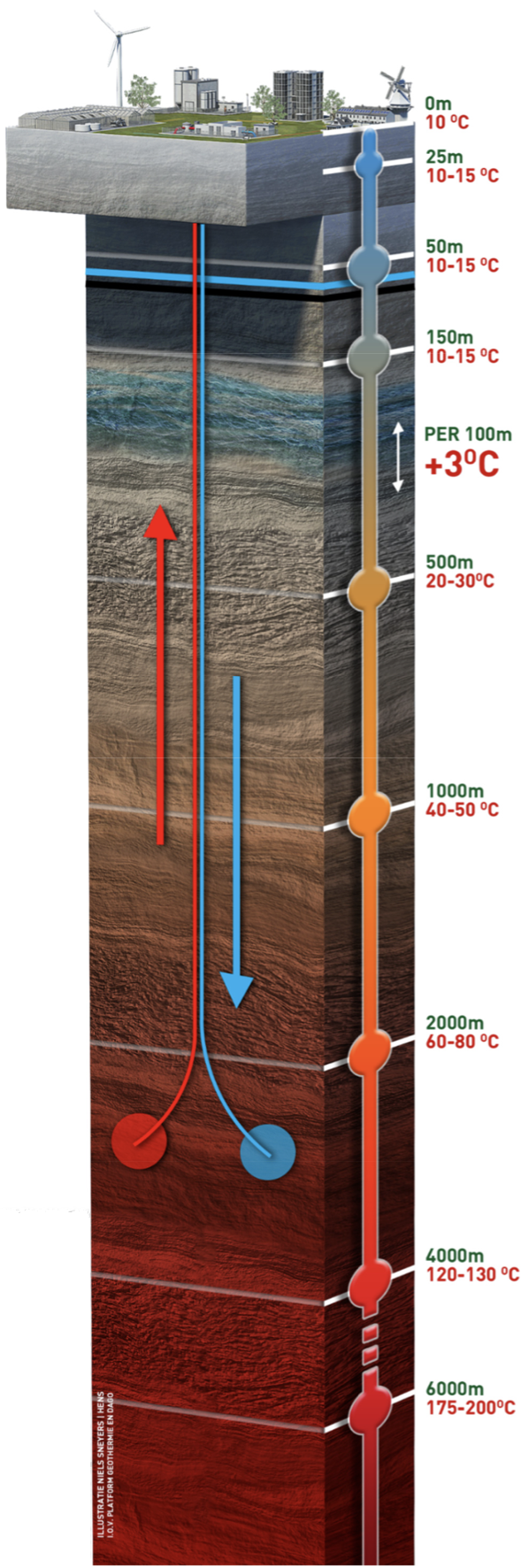Geothermal energy can be used to generate electricity but much more of the generated geothermal energy is used directly as a heat source with a low carbon footprint. This heat is created by extracting water from the lower subsurface, where temperatures are higher than they are at the surface. This makes geothermal energy a key factor in the energy transition. Geothermal heat can be extracted directly from the subsurface, ranging from 100s of meters depth to several kilometers deep. The required depth for extraction is dependent on the location on a tectonic plate. Lower temperature water (30-100 °C) can be used for direct heat supply to housing or industry. When temperatures exceed 100° Celcius the extracted water surfaces as steam and electricity generation can take place. Geothermal energy extraction generally takes place in the form of a doublet: with one producer and one injector well. One well brings the water from depth to the surface whereas the other well injects the water (from which heat is extracted) back into the subsurface. The injection of water makes it less likely for seismicity to be induced close to geothermal wells.
In the video below two (former) DAP board members explain more about DAP and geothermal energy in a MOOC (Massive Online Open Course) created for the bachelor in Applied Earth Sciences at TU Delft. Scroll down the doublet for the video!
bron: EBN – Masterplan aardwarmte

